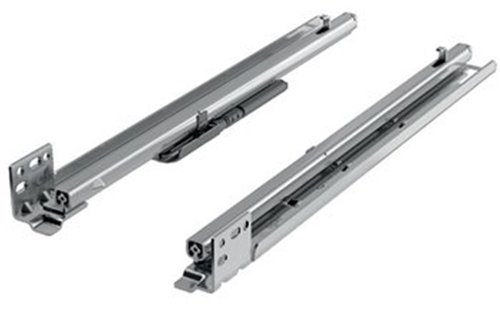In today’s fast-paced manufacturing and retail environments, the efficiency of supply chains plays a crucial role in determining business success. One of the most critical elements that impact the overall performance of supply chains is lead time accuracy. Lead time refers to the amount of time it takes from placing an order with a supplier until the product is delivered and ready for use or sale. For companies sourcing components like drawer slides, ensuring accurate lead times is vital to maintaining smooth operations and meeting customer expectations.
When working with a reliable Drawer Slides Supplier, lead time accuracy becomes even more important because these components are often integral to the final product’s assembly. Any delays or miscalculations can disrupt production schedules, increase costs, and impact the ability to fulfill orders on time. Understanding why lead time accuracy matters and how it influences supply chain management can help businesses optimize their processes and reduce risks.
The Role of Lead Time in Supply Chain Efficiency
Lead time directly affects inventory management, production planning, and customer satisfaction. Accurate lead times enable companies to better forecast inventory needs, avoiding both shortages and overstock situations. When lead times are predictable, businesses can schedule production runs with confidence, ensuring that all necessary components arrive just in time to keep manufacturing moving without interruption.
Conversely, inaccurate or unreliable lead times lead to uncertainties that can ripple across the supply chain. If a drawer slide supplier underestimates the delivery time, the manufacturer might experience downtime waiting for parts, leading to costly delays and potentially missed deadlines. On the other hand, overestimating lead times can result in excess inventory, tying up valuable capital and increasing storage costs.
Impact on Cost Control and Cash Flow
Accurate lead time estimates also have a significant effect on cost control and cash flow management. Timely deliveries reduce the need for emergency shipments, which often incur high premiums and logistical complexities. A full-service drawer slide supplier who provides precise lead time information helps prevent last-minute orders or expedited shipping costs, enabling businesses to operate within budget.
Moreover, knowing when materials will arrive allows companies to plan payments and cash disbursements effectively. This improved financial planning reduces the risk of cash shortages and supports better relationships with both suppliers and financial institutions.
Enhancing Customer Satisfaction and Competitive Advantage
In industries where speed and reliability are key selling points, lead time accuracy directly contributes to customer satisfaction. Businesses that consistently meet or exceed delivery expectations build trust and loyalty, which can translate into repeat sales and positive word-of-mouth.
For example, a furniture manufacturer relying on drawer slide components must deliver finished products on schedule. If the supplier provides accurate lead times and consistently meets them, the manufacturer can confidently promise delivery dates to its customers. This reliability becomes a competitive advantage, distinguishing the company in a crowded market.
Tools and Practices to Improve Lead Time Accuracy
Achieving lead time accuracy requires collaboration between suppliers and buyers, along with the use of modern tools and practices. Technology plays a crucial role; suppliers and manufacturers often implement advanced supply chain management software to track orders, monitor inventory levels, and forecast production schedules.
Communication is another key factor. A strong partnership with a dependable drawer slide supplier includes regular updates on production status, potential delays, and shipping schedules. Transparent communication allows buyers to adjust their plans proactively rather than reacting to surprises.
Additionally, building buffer times into schedules can help mitigate the impact of unforeseen disruptions, but excessive buffers may lead to inefficiencies. The goal is to strike a balance by using historical data and supplier insights to set realistic lead time expectations.
Risks of Inaccurate Lead Times and How to Mitigate Them
Inaccurate lead times can cause cascading problems such as missed market opportunities, production bottlenecks, and strained supplier relationships. Businesses may find themselves scrambling to source alternative components at higher costs or face penalties for delayed deliveries to their customers.
Mitigation strategies include working with multiple suppliers to diversify risk, negotiating contracts that include penalties for late delivery, and conducting regular supplier audits to ensure performance standards. Establishing a collaborative environment with a drawer slide supplier helps identify potential issues early, allowing for timely adjustments.
Conclusion
Lead time accuracy is a cornerstone of effective supply chain management. For industries reliant on specialized components like drawer slides, partnering with a trusted Drawer Slides Supplier that provides reliable lead time estimates can make all the difference. It enables better inventory control, cost management, and customer satisfaction while reducing risks associated with delays and disruptions.
By prioritizing lead time accuracy, businesses can enhance their operational efficiency, maintain competitive advantage, and build stronger relationships with their suppliers and customers alike. This focus ultimately contributes to sustainable growth and success in increasingly demanding markets.

